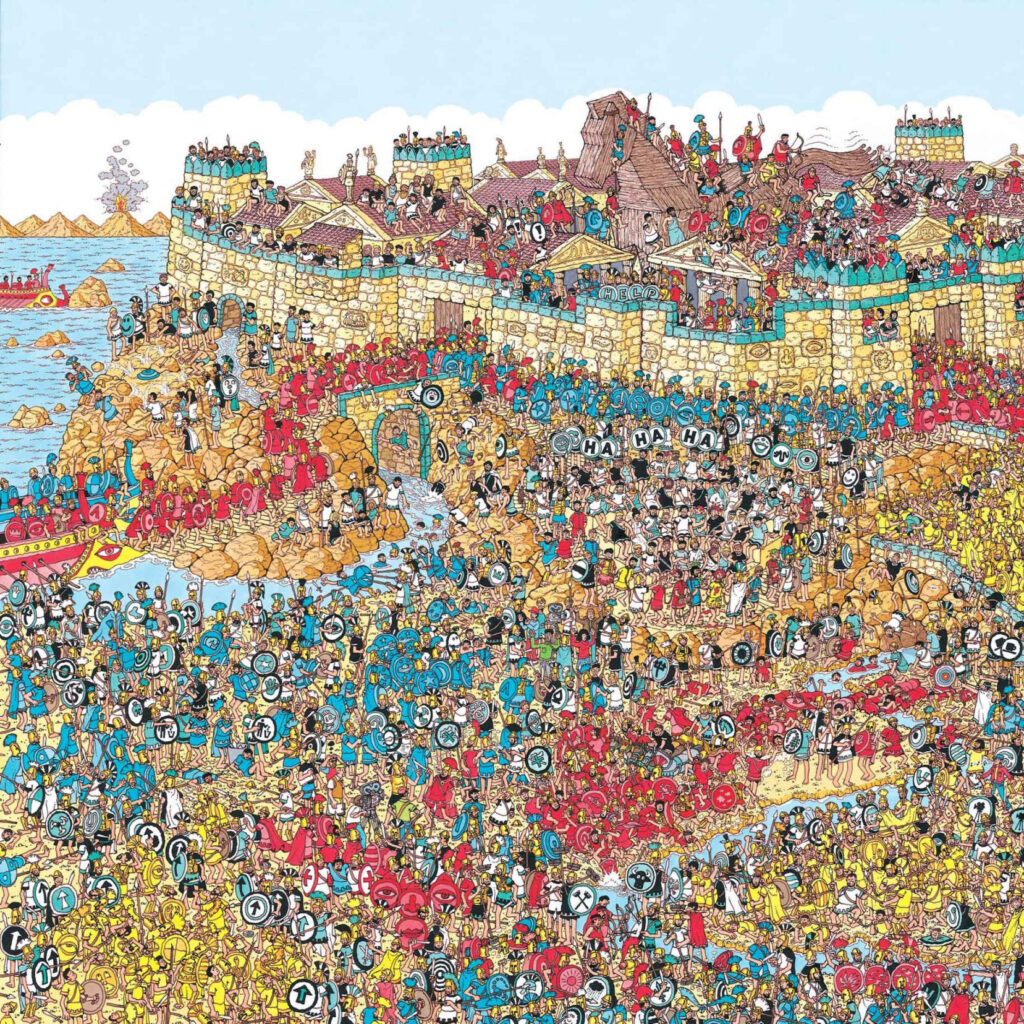For more ESL games and activities, click here.
Where's Wally?
Join my telegram channel for teachers.
Where’s Wally (or Waldo, for American readers) is a well-known book series by Martin Handford. In this series of books, a very busy picture is presented in which the reader whould aim to find Wally/Waldo, his friend Wizard Whitebeard, his girlfriend Wenda his dog Woof and his enemy Odlaw.
While they are looking for these characters, they will see a large number of other people doing various things. These images are therefore full of potential language that can be exploited. However, my favourite way to use this material is to initially test young students.
- Focus: Speaking, Grammar, Vocabulary
- Level: Any
- Age: Primary
- Target Language: Any
- Time: 20 minutes
- Preparation: Obtain a copy of one or more Where's Wally/Waldo books

Procedure:
1: The first step is to introduce students to the names of the characters. This is a good opportunity to cover appearance, clothes and colours. Wally famously wears a red and white-striped jumper and blue trousers. He also wears glasses and carries a cane/walking stick.
2: Once the students are familiar with the characters, you can start looking at the pictures. Have students find Wally and the other characters first of all. There are often some other items to be found in the pictures too.
3: After finding all the characters, you can start discussing other things that are happening in the picture. Students may wish to start speaking about other aspects of the picture as they notice things. This is fine too.
Other language features you can test here are:
- activities;
- jobs;
- things people should or shouldn’t be doing;
- present continuous;
- what happened before (past simple);
- what will happen after (will/going to).
Follow on:
If a student has the language, you could have them imagine that they visited the scene that you discussed. You could then have them write a letter saying what they saw.
Variations:
Where’s Wally isn’t just a good way to find out what students know. Generally, primary aged students love these books and will stare at them for a long time to find Wally. You could decide to spend a bit of time at the end of each lesson as a reward for good behaviour during the lesson, or to see how they are developing.




